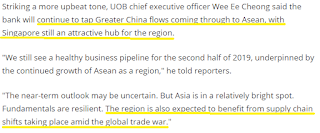There
were several blogs discussions on Supplementary Retirement Scheme (SRS). For
example, Seedly have good articles to summarise the pros and cons of SRS. In
this article, my focus will be on my personal experiences and considerations.
My
wife and I opened our SRS accounts last year with $1 top-up. There were discussions
that this could “lock-in” the statutory retirement age at 62 years old which is the current prevailing age. The “statutory retirement age” is dependent on the gov policy and
this age could change in future. The exact wordings on the IRAS website are as follow:

Beyond
the rhetoric of retirement savings, the key benefit to me is to reduce
the amount of tax that I need to pay next year! I had performed relatively well in my job this
year and this was reflected in my bonus 😄 Having already done my CPF SA cash
top-ups as well as donated to charity organisations, I was still exploring to reduce
my tax payable further. This was how SRS become an option.
Besides simply throwing money into SRS, it is important to have an exit strategy. This is
to protect the capital in case of premature withdrawal. This spurred me to consider the 5% penalty for premature withdrawal AND that 100% of the withdrawal
sum will be taxed. In addition, the withdrawal sum will stack with the total
income received (e.g. from my salary) for that year.
My ultimate decision is to pick a stock with potential to increase beyond 5%, so that it could minimally cover
the penalty frees. My top-up amount would be dependent on the stock purchase price.
A few months back, I bought
into OCBC at around $10.68. The target sell price is at least $11.30. Alternatively I will plan to hold the stock for 2 years to allow the annual dividends of 3.2-3.8% to cover the penalty fees.
GoHuat














